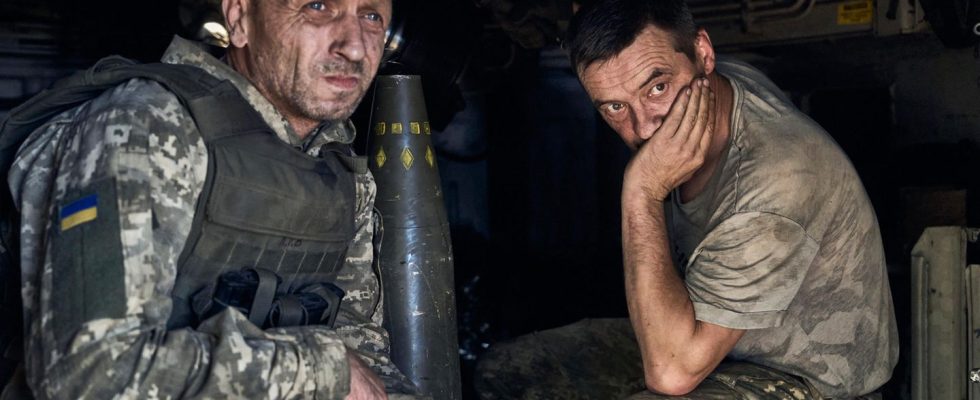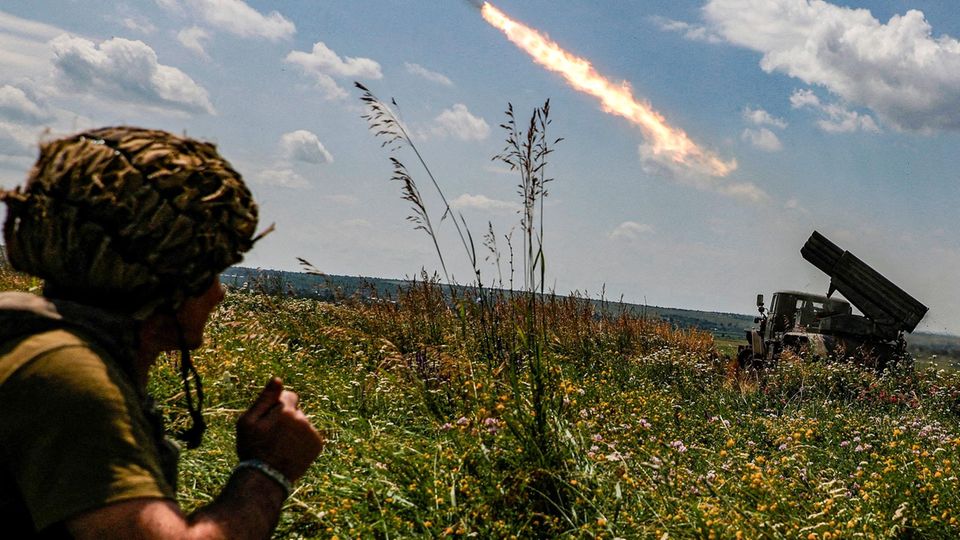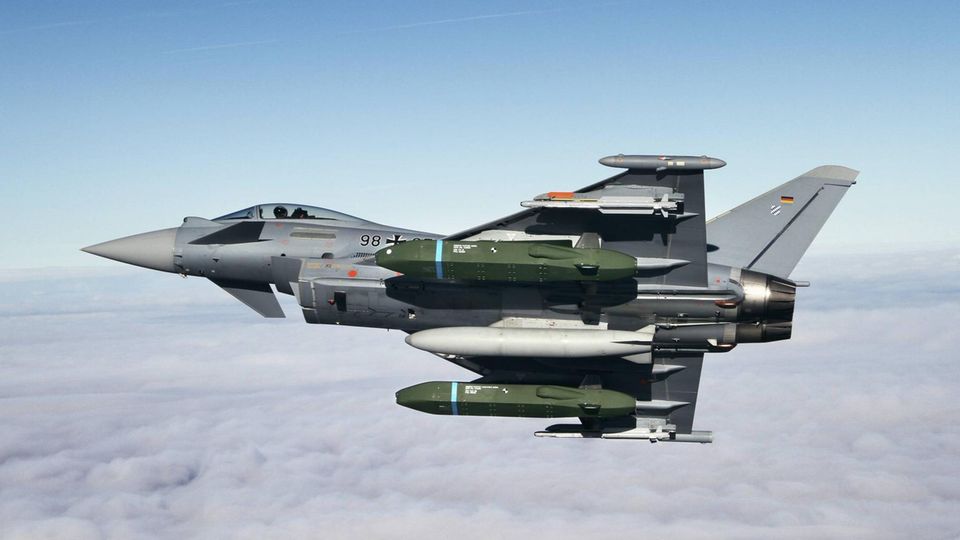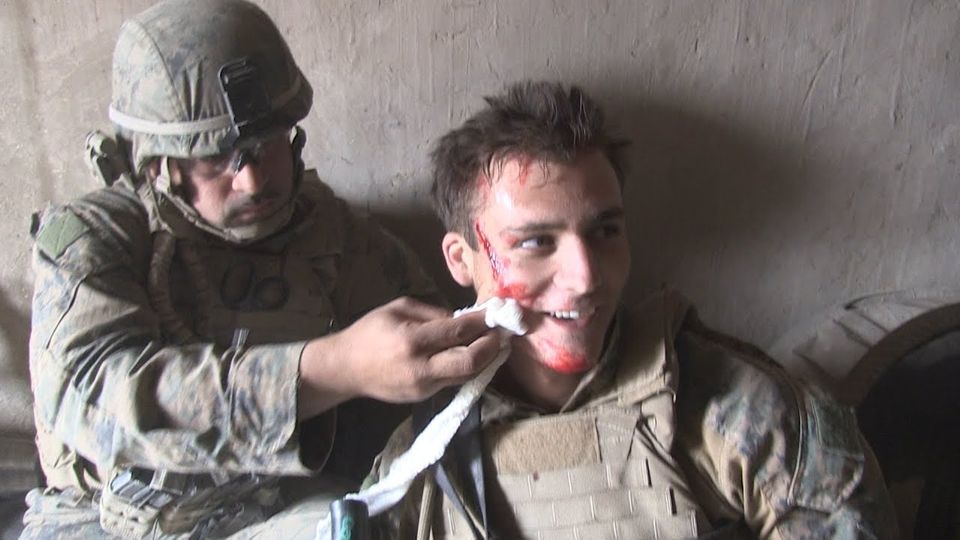Russian offensive
Putin’s troops are in front of Kupyansk. Therefore the city must not fall
Ukrainian soldiers inside their self-propelled howitzer.
© DPA
Kiev’s summer offensive has now lasted two and a half months, but Putin’s troops have also been attacking in the north for two weeks. They try to encircle the city of Kupyansk and then want to drive Kiev’s troops across the Oskil River.
Kiev concentrated its attacks on Bakhmut and the south of the front. But in the far north the Russians are advancing. Very slowly, but so far they could not be stopped. Your destination is the small town Kupyansk, it controls the supply routes of the Ukrainian armed forces. Kupyansk is therefore a key position. Should the city divided by the Oskil River fall or even be surrounded on several sides, the Ukrainians must expect the Russians to cross the river to the north and approach the P79. The villages evacuated from Kiev these days are also located here. Kiev apparently assumes that the fighting will shift towards Kharkiv.
Battle for supply lines
In addition, all liberated areas south-east of the city and river are in danger because they are supplied by the city and the P07 road. In the area, Kiev holds a large frontal salient. The Russian troops are coming out of the large forest area north of Kupjansk and are advancing just as laboriously as the Ukrainians did in their summer offensive. But lately the Russians have made a slow but steady advance. They are said to have reached Syn’kivka north of the city. But he is still held by Ukraine, from Syn’kivka it is about seven kilometers to Kupyansk. The area is only lightly built up. On the northern edge of Kupyansk, industrial buildings offer the defenders better positions, before the city are the settlements of Petropavlivka and Kucherivka (all place names follow the spelling of Google Maps).
Pressure on the entire front arch
In addition to the main push on the town of Kupyansk, the Russians attacked along the Ukrainian salient south-east of the town. Here they want to interrupt the supply road P07. The situation is still dangerous, but not critical. Nevertheless, Kiev must stop or even reverse the further advance of the Russians. Moscow does not have to occupy the city of Kupyansk, it could take months. The situation becomes untenable as soon as the Ukrainians cannot use the supply routes through the city. You need them to supply your troops, but also for an orderly retreat in the event of a defeat.
Procedure according to the textbook
The Russian offensive is in some respects textbook. For two months, Kiev’s troops charged against Russia’s defenses. The Russian front gave way by a few kilometers in some places, but held out. During these two months, the deployed troops were clearly worn out. It is difficult to say who lost how much material and men. However, one should assume that attacking fortified positions over mined terrain is more costly than defending. Especially since the Russians are superior in artillery and air force. The moment when an offensive has reached its peak and most of the offensive power has been used up is the ideal time for a counterattack. And so, since the beginning of August, the Russians themselves have become offensive. With the offensive operations in the north, Moscow is forcing Kiev to deploy forces there that are actually needed for its own summer offensive. If Kiev does not send new troops north, there is a risk of greater losses of territory there. Then it would be possible for Russia to occupy more square kilometers here than the Ukrainians have liberated elsewhere.
Ground war is unstoppable
Kyiv faces a dilemma. It currently seems more promising to weaken the enemy with attacks in depth using drones and cruise missiles. But the ground war cannot simply be stopped. For one thing, Kiev is a prisoner of high expectations of the summer offensive. If it were to be broken off today, there would only be three points of penetration into Russian-occupied territory, which would probably be lost again without further efforts. The effect on the country’s own population, but also on Western supporters, would be fatal. Moreover, the Ukrainian government cannot stop Russian operations. If the Kremlin finds the strength to make its own advances, the costly ground war will continue.
This threatens a second bachmut winter, in which Russia slowly but inexorably first completely destroys other cornerstones of the Ukrainian front before occupying the rubble. Unfortunately for Putin, time is ticking. In about two months the mud and rain season will start in Ukraine. Even then, this form of “slow motion war” can be continued. But as soon as the fields are impassable, it will hardly be possible to penetrate the Russian positions any further.





